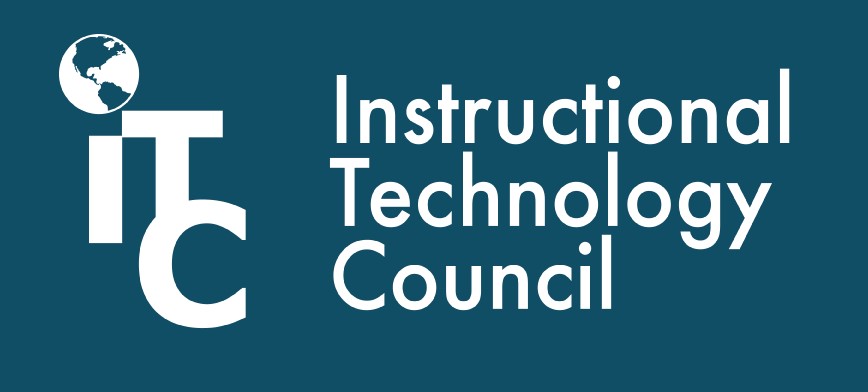Online learning continues to be a disruptor in education — in the way we teach and learn, the way we set aside geographical boundaries and time zones, and the origin of businesses specific to online learning, such as OPMs (online program management companies).

Highlighting key online learning enrollment numbers from the National Center for Education Statistics, Forbes noted that in 2021, nearly 60% of all U.S. higher education degree- seekers took at least some online classes, and 30% of the same group of learners study exclusively online. Breaking it down further, about 8.5 million learners in the U.S. take online courses at public institutions, and about 2.79 million learners (almost 15% of all postsecondary learners) are enrolled in online higher education institutions. Another notable statistic is that online institutions’ student population is more racially diverse than traditional institutions.
This article is part of a biweekly series provided by the Instructional Technology Council, an affiliated council of the American Association of Community Colleges.
Despite online learning being part of higher education for the past three decades, sometimes it is not necessarily understood or even accepted by administrators and/or faculty. The reasons range from limited personal experience, bad personal experience, perceptions that online learning is subpar to in-person learning, required comfort level with technology, and so on.
Online learning is “uncomfortable” for many as it is unfamiliar. It is also confusing as online learning refers to several different types of learning environments – hybrid, asynchronous online, remote (what we experienced during the pandemic), hyflex and other terms. Furthermore, it continues to evolve, especially with the speed of technological advancement and the need to meet the expectations of a new generation of learners.
Gathering thoughts
The book “From Grassroots to the Highly Orchestrated: Online Leaders Share Their Stories of the Evolving Online Landscape in Higher Education” (OLC Press) addresses matters around five broad areas of online learning: leadership, administrative functions, academic functions, student onboarding and support services, and innovations. Each of these is a section within the book, which was inspired by qualitative research the editors conducted on organizational structures of online learning units in higher education institutions. The findings led the editors, Bettyjo Bouchey (chief officer for the Professional and Continuing Education Department at the University of Vermont), Erin Gratz (instruction and outreach librarian at Orange Coast College in California) and myself, Shelley Kurland (inaugural Dean of Virtual Campus at County College of Morris in New Jersey) to realize the complex and rich experiences of chief online learning officers (COLOs) needed to be further explored and shared.
In “From Grassroots to Highly Orchestrated,” COLOs and other online learning experts from various U.S. higher education institutions of different Carnegie classifications, organizational cultures and geography share the lessons learned and, at times, advice to help educators navigate the ever-evolving online landscape. The authors not only wrote about their successes but also shared about the challenges they faced, responses to shifts in institutional goals, and the decision-making process to achieve goals and resolutions.
Chapter breakdowns
The first section of the book focuses on leadership, specifically the chapter authors reflect on leadership lessons within the context of the pandemic and the shift to remote work. The chapter authors emphasize the importance for leaders to recognize, acknowledge and empathize that their teams comprise individuals, each with their own stories, challenges and stressors, especially during the pandemic. Even though the chapter authors shared their experiences and leadership frameworks within the context of Covid, each of their lessons are relevant, applicable and evergreen.
Administrative functions, in which the authors share high-level conversations that lead to decisions with profound impact on learners, faculty, staff and the institution, is the second section. The chapter authors discuss salient topics such as institutional culture, mission, resource access and utilization, talent management, strategic planning and decision-making considerations. Regardless of the decisions, the pivots and the results, the authors reaffirm their institutions’ commitment to students, including their preferences and needs. Furthermore, they draw attention to the importance of remaining diligent in monitoring trends, institutional and stakeholder needs to best respond to changes intentionally and in a timely manner.
Academic functions, the third section of the book, encompass functions related to all aspects of teaching and learning in the online environment, from curriculum to faculty professional development to learning management oversight. Chapter authors share the origins of their institutional online unit, intersection of online programming and faculty governance, online program’s role in being “disruptive,” innovative and entrepreneurial within traditional higher education boundaries. The authors share their lessons learned and how others may do the same at their own institutions.
Student onboarding and support services are essential elements as students are at the heart of every higher education institution. In this fourth section, the focus is on functions that impact students outside of the classroom. The chapter authors provide insight into the expansive needs of online students that are both similar to and unique from on-campus students. The authors develop recommendations for online units on marketing, onboarding initiatives, academic coaching, and behavioral and mental health matters.
The final section — innovation — moves away from the operations of online learning at higher education institutions. Innovation within the context of this book means applications of creativity and ingenuity that benefit online learners and online programs — new or established — at institutions. The chapter authors shared stories of creativity and ingenuity that benefited online students and online development. Beyond that, the authors discuss the importance of collaboration and forming “coalitions of the willing” either within one institution or across many. The authors share lessons learned, effective practices, and recommendations to support initiatives and position their institutions for success.
Kudos from the field
A year since the release of “From Grassroots to the Highly Orchestrated,” reviewers and readers consistently note it as relevant, timely and a valuable addition to any higher education institution with online learning offerings. As one of the book’s reviewers, Elizabeth Ciabocchi, vice provost for academic affairs at Adelphi University (New York), said: “The chapter authors are a knowledgeable and diverse group representing institutions of various sizes and types, each with its own unique history and culture that influenced its particular responses to the enormous shift to remote and online learning of the past several years. The inclusion of many voices and approaches is a major strength of the book.”





